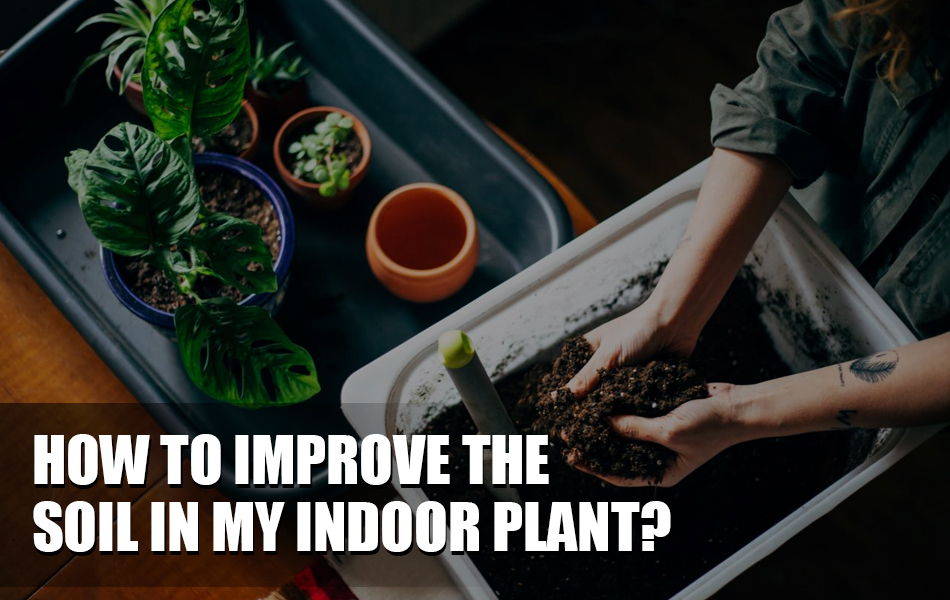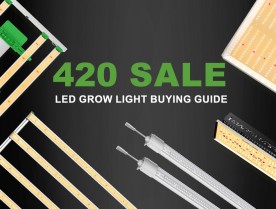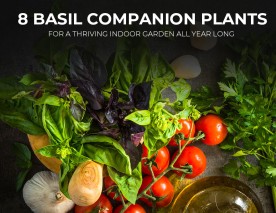
The importance of soil to the growth of plants cannot be overemphasized. The soil is where the root system resides and where they absorb most of the nutrients and water the plants need. The need for high-quality soil is even greater in indoor plants. The peculiarities of the indoor grow environment mean that most of the nutrients your indoor plants require to grow and develop solely comes from the soil.
This article addresses why you need to improve the soil in your indoor grow area and provides you with practical tips on how you can make this happen. If you are ready, let’s get to it!
Why Should You Improve The Soil For Your Indoor Plants?
Whether you buy your indoor potting soil or mix it from scratch, its nutritional content, texture, density, and water-retaining capacities drop over time. Leaving the soil depleted will adversely affect the growth of your plants and, by extension, your output during harvest. Therefore, there is an important need to improve the soil over time to give your indoor plants the best growing conditions possible.
Periodic improvements guarantee an extended lifespan of the potting soil. It is easier and cheaper to maintain an existing potted soil than to buy a new potting soil mix or create one from scratch. Improving indoor plant soil also protects it from the risk of pets and disease attacks. Other benefits include the introduction of beneficial soil organisms, enhanced gaseous exchange and breathing for roots, and increased carbon dioxide storage in the soil.

How Do You Improve The Soil For Your Indoor Plants?
The soil you use for your indoor plants can determine how your plants turn out. That is why experts recommend using healthy fertile soil when preparing for indoor growth. It would be best if you did not leave anything to chance as you would when growing outdoors.
Here are a few practical ways to make your indoor plant soil healthier and more fertile:
1. Get rid of unwanted materials.
It is not uncommon to see unwanted items like dead plant materials, growing weeds, and others in your indoor plant soil. Start by removing them all. Pull out all the old roots and stems and handpick the unwanted debris. Pull out the growing weeds and their roots to ensure they do not regrow. You will need a trowel to eject old weeds, stems, and roots.
2. Improve aeration.
Research has shown that plants do notgrow properly in compacted soil. If you have been using your soil for a while, it is already compacted because of the pressure the plant parts exert on it. The absence of enough space between the soil particles makes it difficult for moisture to flow from the soil to the plant roots. You can do this by digging into the potting soil using a fork or trowel.
3. Get rid of pests and diseases.
If you notice the presence of pests or diseases in your garden or indoor plants, your potting soil is most likely home to harmful microorganisms. The solution is to withdraw the plants and sterilize the soil using heat. Place the potting soil in a black garbage bag and leave it under the sun for a few weeks. Alternatively, you can place the soil in a baking tray and heat it in the oven at 120 degrees for about an hour. The only downside with oven baking is that it may also kill the beneficial organisms and insects in the soil.
4. Introduce fresh soil.
Divide your old potting soil into two halves and replace one half with an equal amount of fresh potting soil. The 50% new potting soil serves as a fresh source of beneficial nutrients to your plants, improving their vitality and growth. It is more cost-effective than replacing the entire soil with fresh potting soil. You can mix the old and new soil using a trowel or shovel if it is in large amounts.
5. Add some compost.
An average garden or indoor plant soil comprises different components, including perlite, peat, coco coir, vermiculite, and others, all present in varying amounts. Adding a small amount of compost (usually 25%) to the potting soil can helpimprove texture and aeration. It also enhances moisture retention.
6. Add suitable fertilizer.
In addition to the compost, you should add some fertilizer to your indoor plant soil to improve its quality. The best fertilizer for this purpose is theslow-release organic fertilizer, especially if you are growing heavy feeder plants. It is excellent for nutrient management. The right amount often depends on the amount of potting soil you are working with and the recommendations of the fertilizer manufacturer.
7. Mix your own soil.
This is the most important soil improvement tip for your indoor plants. Depending on the requirements of the plants you are growing, you can mix an organic potting soil by combining different amounts of pumice, vermiculite, perlite, peat, coconut coir, composted bark, and other additives to create a high-quality soil with all the nutrients your plants need.
8. Water your plants at the right time.
It may be convenient to water your indoor plants at any time of the day. However, you can improve the soil significantly by watering them early in the morning or late at night. This watering routine ensures that the soil absorbs and retains moisture for longer before drying up. You can automate the process using an automatic water timer with a drip system.
9. Improve the soil drainage.
Your garden or indoor plant soil loses nutrients and quality when it is waterlogged. One way to avoid having excess water in your pots is wicking. Find a suitably sized wick that can go into the bottom of the pot through the drainage hole. While this does not help with compaction, it improves drainage and prevents root rots.
Let’s Help You Improve Your Indoor Plant Soil.
The potting soil you use for your indoor plants is their foundation. It is the primary source of nutrients and support for your plants. Unlike outdoor or garden soil, indoor potting soils are specially mixed to address the needs of indoor plants. This also means their compositions are different.
At Mars Hydro, our indoor growing experts are always available to discuss your situation and help you improve your indoor plant soil to meet the precise demands of your plants. Our goal is to make your experience as an indoor grower as smooth as possible.
Do you have any questions about improving your garden soil? Feel free to call or send us an email today!





